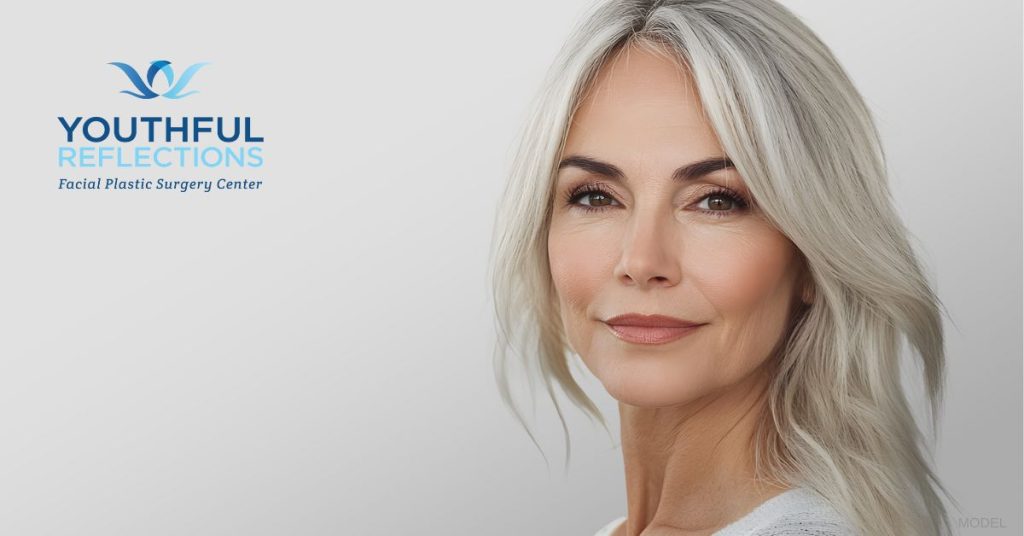Start with a “Zoom boom,” then add “filler fatigue” and “Ozempic face.” The result? A surge in the popularity of facial plastic surgery procedures, including an 8% rise in the number of facelifts performed in 2023 compared to a year earlier.
According to the American Society of Plastic Surgeons, this figure matches the total increase between 2019 and 2022. The increasing popularity of facial plastic surgery extends beyond facelifts, and there is no sign that the trend is slowing down. Learn more about the factors driving this interest in surgical rejuvenation below.
Social Media and the Zoom Boom
Women and men looking to enhance their appearance often begin with what they spend the most time looking at daily: the face and neck. There’s no doubt that even before the pandemic led to virtual meetings taking the place of conference rooms, social media had already forever changed how we view ourselves. Between the high-quality cameras in our phones and scrolling through perfectly curated and edited selfies on Instagram, minor imperfections can start to feel like eye-catching flaws.
According to the American Academy of Facial Plastic and Reconstructive Surgery (AAFPRS), 58% of facial plastic surgeons reported an increase in bookings and treatments in 2022 compared to 2021. More than 75% of surgeons noted a bump of over 10% in patient demand. The “Zoom effect” remains a significant factor, with 79% of respondents citing it as a major contributor to patients seeking treatment.
The “Ozempic Face” Phenomenon
The rise in popularity of GLP-1 weight loss medications like Ozempic has been accompanied by the emergence of a new concern: “Ozempic face.” This term describes the facial changes that occur due to rapid weight loss induced by such medications. When people lose weight quickly, they often experience a loss of facial fat, leading to sagging skin and a more aged appearance. Symptoms of “Ozempic face” may include:
- Increased signs of aging, such as more lines and wrinkles
- Loss of facial volume, resulting in loose and sagging skin
- A hollowed-out appearance
This phenomenon has led many individuals to seek facial plastic surgery to address these concerns and restore a more youthful, vibrant appearance. Popular treatment options include fat transfer and facelift surgery. Learn more about how I treat Ozempic face in this related blog post.
What Is ‘Filler Fatigue?’
While dermal fillers have long been a popular nonsurgical option for facial rejuvenation, there’s growing concern about “filler fatigue.” This occurs when patients require increasing amounts of filler to achieve or maintain their desired results.
“At some point in the aging process and with a certain degree of laxity and sagging, you will get diminishing returns on your non-invasive procedures,” said Sherard A. Tatum, president of the AAFPRS.
Patients who once turned to fillers to create a more well-defined jawline, for example, are realizing that a lower facelift gets better results than fillers or other non-surgical skin tightening treatments and can be less expensive in the long run. Similarly, patients are considering eyelid surgery or a brow lift to treat under-eye hollows, puffiness, or a sleepy, heavy, or droopy look in the upper face.
We’re also seeing more patients in their 40s deciding to skip fillers and opt for facial plastic surgery. They are seeking natural-looking results that enhance their features without appearing overdone. The focus is shifting towards procedures that offer long-lasting improvements while maintaining a person’s unique characteristics.
Choosing a Facial Plastic Surgery Specialist
Not all plastic surgeons have the training or experience to create the natural-looking results you want. As a double board-certified facial plastic surgeon, I’ve devoted my career exclusively to facial procedures. If you’ve been considering facial plastic surgery, request a consultation using the online form to meet with me personally. Or call our office at (615) 942-8016.








Leave a Reply